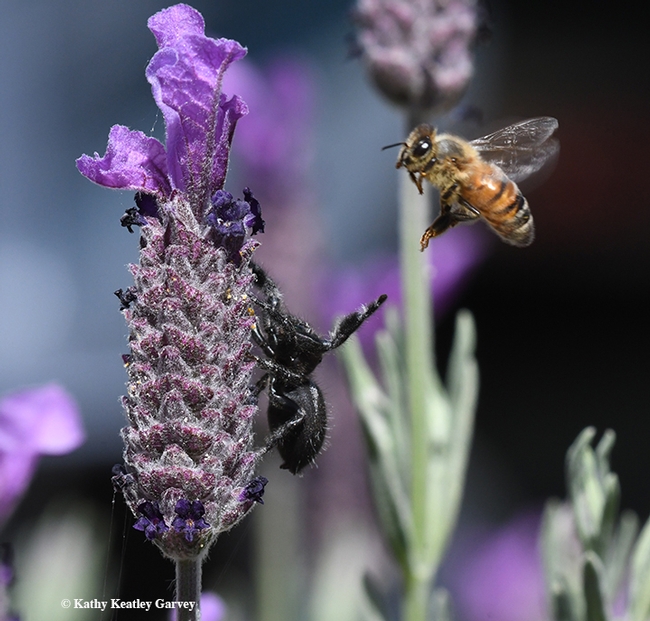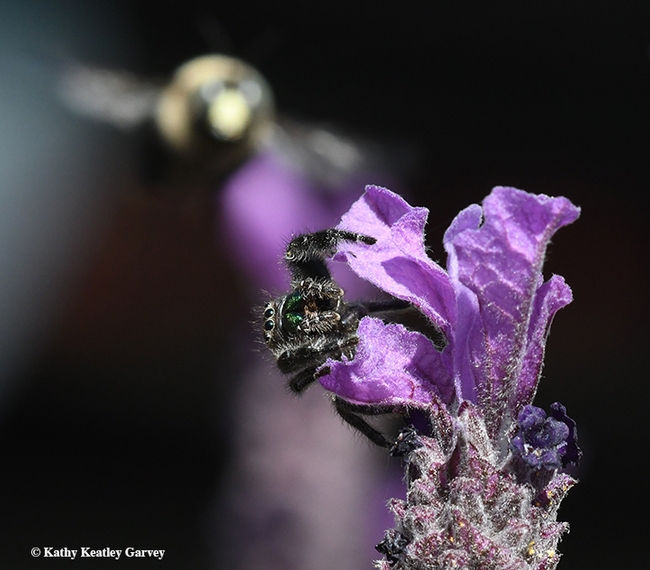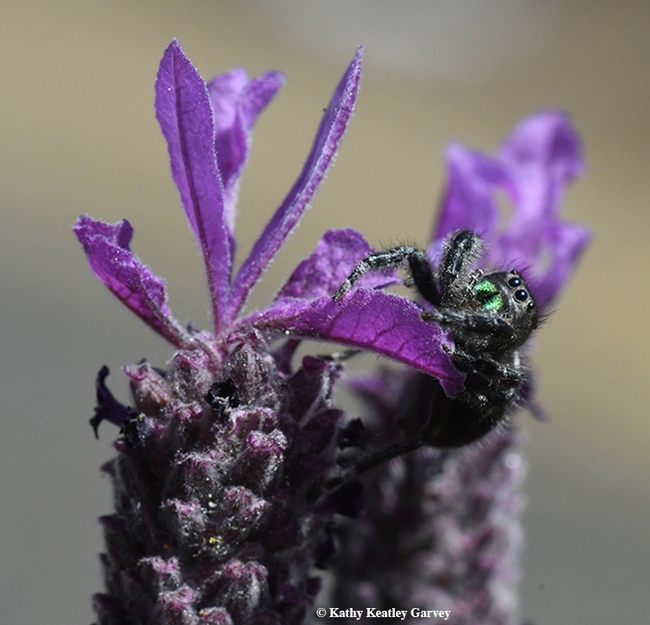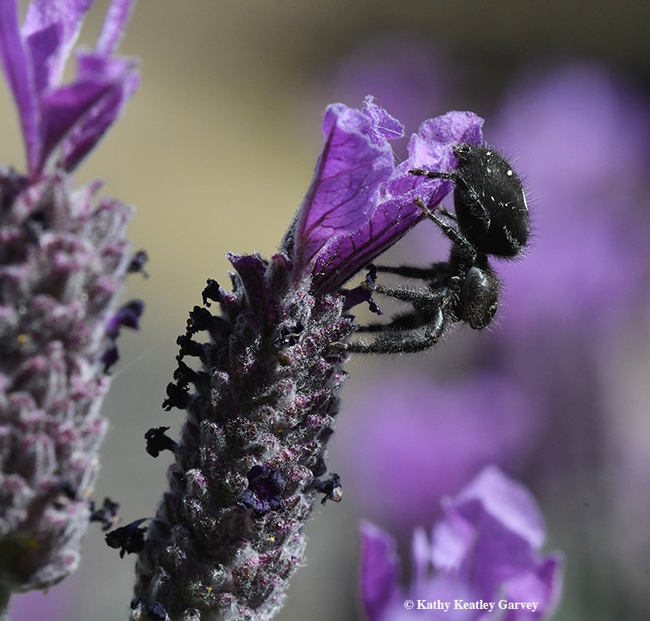Sometimes you get lucky. Sometimes you go hungry.
Take the case of the huge jumping spider (a female Phidippus audax or bold jumping spider, as identified by Wade Spencer of the UC Davis Bohart Museum of Entomology) hanging out in our Spanish lavender. Hey, pretend I'm not here! It stealthily crawls up and down the stems, blending into the shadows. It summits the flowers, looking for bees. Where are the bees? Where is my dinner?
The predator and the prey. The hunter and the hunted. The jumping spider, with four pairs of eyes. The honey bee with five eyes (two large compound eyes and three smaller ocelli eyes). The jumping spider's bite is venom. The honey bee's sting is venom.
If they meet, it will be deadly. The spider will shoot venom in the bee, paralyzing it.
Meanwhile, the honey bees are buzzing from flower to flower, some oblivious to the dark shadow lurking near them. No ambush today.
Sometimes you go hungry.
Attached Images:

A honey bee narrowly avoids the outstretched jumping spider, a Phidippus audax. (Photo by Kathy Keatley Garvey)

Oops, wrong direction! The jumping spider,Phidippus audax, is looking elsewhere as a bee arrives on the scene. (Photo by Kathy Keatley Garvey)

The jumping spider, Phidippus audax, climbs its mountain and lurks. (Photo by Kathy Keatley Garvey)

The jumping spider, Phidippus audax, exits its summit, the Spanish lavender. (Photo by Kathy Keatley Garvey)